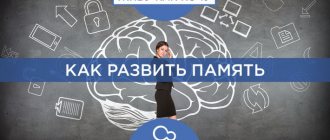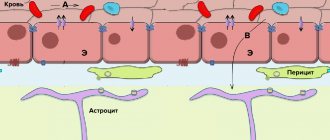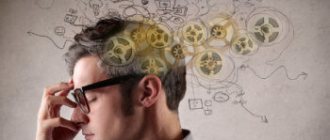The newspaper editor was furious - his young employee left the meeting, defiantly without writing down a single line from the verbose and multi-point instructions dictated by the editor at the meeting. Calling the careless intern on the carpet, he tried to reprimand him. However, he had to be quite surprised when all his instructions were literally reproduced point by point by Solomon Shereshevsky from memory.
He had a phenomenal memory, so much so that he became the object of scientific study by psychologist Alexander Luria for 30 years, after which the scientist refused to find the limits of his memory - there were none!
The secret of his abilities was synesthesia - when the senses interact together, which most inhabitants of the Earth do not have. As a result, his sensory memory transferred information to the short-term, and that to the long-term with incredible strength.
Not everyone is able to remember this way, but you can improve your short-term memory by doing exercises.
What 5 types of memory improve short-term memory?
Let’s make a reservation that by short-term we will take the memorization of information for minutes, hours, days.
Every day a person is faced with large amounts of information. To process it and use it correctly, you need a good memory. In mental activity, the process of communication, reading and many other areas, a short-term version of it is used. It helps to process various information.
But some people notice that it is difficult for them to make a decision, answer a question based on an overheard conversation, remember a phone number or the name of a salesperson seen on a badge in a store. In this case, you need to work on yourself and improve your memorization abilities.
Determine the type of short-term memory for “refinement”
Depending on the source of information and the individual characteristics of the brain, there are several types of it:
- visual;
- tactile;
- taste;
- olfactory;
- auditory
Before improving memorization and short memory, you need to find out which type works worse and which is more developed. Most people use visual and auditory systems most often. But for some people, to remember better, they need to write down information so that muscle memory works.
Some people use the association method to remember: they associate what they need to remember with some smell or taste.
Maintain a healthy sleep pattern
The only time our minds rest is when we sleep. Well, it would be technically incorrect to say that the mind is at rest when we sleep. Even then, the brain carries out different processes, such as breathing. But when we sleep, this is the only state when our brain cannot actively absorb and process information.
Research has shown that adequate sleep improves various brain functions. The same is true for our memory. A tired brain is terrible at storing and processing information. This is why if you want to improve your short-term memory, then you must have a healthy sleep pattern.
What is short-term memory
There are usually three types of memory: sensory, short-term and long-term. Sensory memory is the first memory to enter the human brain. It lasts a fraction of a second - long enough for us to feel something: the touch of clothing on the skin, the smell of smoke, the sound of wind, the sound of thunder and the flash of lightning. We use this memory in the future, but now, immediately after manifestation, it disappears.
Just now, you didn’t notice the touch of the watch bracelet on your hand, but now this feeling has surfaced in your memory, because I reminded you of it and transferred your sensory memory to the short-term area.
Short-term memory contains current events - what you are thinking about at the moment. You use it constantly without realizing it. For example, you understand the end of a sentence only because you remember the beginning. It is believed that short-term memory can hold about seven objects for 15–30 seconds.
But if you repeat these seven objects, they will move into long-term memory - a potentially limitless store of memories,
It helps to process information that comes from various external stimuli. It is stored in the brain for varying periods of time, but usually no longer than 3 months. Short memory is used in learning, when reading, helps answer questions, focus on a problem and perform several tasks at the same time.
The better it is, the higher the intelligence indicators. Previously, it was believed that it could only be trained in childhood, by memorizing poems, etc. But there are many ways to improve memory for an adult.
First you need to understand that her work is related to the ability to concentrate, to concentrate. Therefore, you need to try to remove distractions at the moment when you need to remember something.
Studying to the sound of TV or music is ineffective.
Possible problems and violations
Phenomenal memory - what is it, methods for developing information memorization
Every person's memory is far from perfect. Therefore, everyone has various problems and dysfunctions of this function. Possible violations:
- Violation of consolidation. Information is not transferred from short-term storage to long-term storage. There are many reasons: lack of sleep, insufficient logical processing of incoming information, illness, hunger, and also ignorance of the mechanisms of memory.
- Impaired entry of information into short-term memory. May occur due to inattention or lack of sleep.
- Diseases. Problems occur both with a common cold (although not so significant) and with serious diseases (Pick's disease, Alzheimer's disease, brain oncology).
These problems may go away over time or get worse.
Problems at a young age
Memory tends to be better at a young age. But disorders can also occur in young people.
Students studying
The reasons are universal for any age; the following can be added to those described above:
- Fatigue. The problems are especially aggravated for students during the session. If too much information enters the brain, a protective inhibition occurs to prevent overload.
- Severe stress. The volume of RAM during periods of stress decreases by 60-70%. As a result, the intelligence of an adult is the same as that of a 10-year-old child.
- Wrong lifestyle. If you sleep little, eat poorly, smoke and drink excessively, then over time your memory will invariably begin to deteriorate, and some of the changes become irreversible.
Prevention of memory deterioration at any age is regular moderate mental stress, walking and a willingness to perceive something new.
Six Ways to Improve Short-Term Memory
Wash your face with your eyes closed
As soon as you enter the bathroom, immediately close your eyes - searching for a toothbrush, toothpaste, soap, shampoos, gels will become a good workout for your brain (especially for the part of it that is responsible for memory). Blind navigation is an easy way to reset your alertness and memory.
When you get out of the bathroom, go into the kitchen. Close your eyes and try to find a jar of jam in the refrigerator, open it and eat it with a bun.
Count how many drops appear on the table. Each time there should be fewer of them!
Each time there should be fewer of them!
move your body
Dancing moves not only activate the cerebellum (which is responsible for forethought and judgment), but also causes your body to produce brain-derived neurotrophic factor (BDNF), a protein necessary for effective neuronal communication. Dancing is a social activity, and like any communication, it activates the functioning of neurons. In addition, dancing, like other physical exercises, helps the heart pump oxygen to the brain and improves coordination.
Change your working hand
I already wrote earlier, but I remind you - be left-handed if you are right-handed, and vice versa. Ordinary actions (holding a fork, spoon, toothbrush), transferred to an unaccustomed hand, will already help your brain reboot and learn simple things again. “When you—as a child—get used to always using the same hand to perform a task, it becomes a reflex—and it’s good to “unwind” it,” advises Allen Seals, professor of neurosurgery at Vanderbilt University Medical Center (USA). “When you change hands, the brain is activated to engage new areas - it’s a great warm-up for it.”
Table tennis
“Ping pong improves hand-eye coordination and gives your brain a great workout,” says Daniel Amen, brain researcher and founder of the Amen Clinic (USA). - And in general, remember: when it comes to intellectual training, the first rule is to do things that your brain doesn’t know how to do. Any learning new thing is a great workout for the brain, and table tennis is very cool in this sense.”
If this is not possible, just throw the ball with your racket as much as you can.
If the process is delayed, hit alternately with one and the other side of the racket.
Go shopping
“Shopping is a great exercise for the mind,” says Gary Small. - You go shopping, you contact new people, you calculate prices. All these actions force different areas of the brain to work, while they follow one another - consider it a kind of cross-fit for the mind. However, don’t get carried away with shopping too much - spending too much can cause stress and, on the contrary, harm your computer.”
Learn to juggle
According to a 2013 study published in the journal Nature, systematic juggling increases the size of certain areas of the brain. After three novices were trained to throw balls for three months, the amount of brown matter in their temporal lobe and posterior parietal sulcus (the areas that process visual information and motor functions) increased. “Juggling—and any other activity that requires gross and fine motor skills, spatial orientation, and pattern recognition—will keep your brain firing on all cylinders, awakening all the previously dormant areas,” says Allen Seals.
Life hacks for excellent memory
Use memory techniques to commit the information you need to memory:
- Visualize. As you read a book, imagine the characters and setting. Mentally tie the name of a new acquaintance to his appearance. Masha is a tall brunette, Petya has a Spiderman tattoo on his neck. Describe the numbers in the phone number using simple images: 7 - poker, 2 - swan, 0 - donut.
- Choose associations. Rhyme information to help you remember it better. Since childhood, I have known that “A bisector is a rat that runs around corners and divides them in half.” After school, I never had to halve a corner, but the information remained in my brain forever.
- Organize your information. Clean up your mail and create separate folders for important recipients. When making a shopping list, break it down into categories: drinks, food, household chemicals. Decide on a place for important household items - a key holder, glasses on the bedside table, a remote control for the TV.
A simple key holder makes life much easier and saves time in panicky searches for keys before going out.
- Organize important things. This method was once known as the “Cicero technique” or the “Roman room method,” but the famous series about Sherlock Holmes forever cemented the name “memory palace” in the public consciousness.
It’s simple: in the imagination you create a room, or a house, a road, or even a magical forest. Things, events or concepts that need to be remembered are associated with certain elements of this space and objects in it. For example, a friend’s birthday is a balloon, a monthly loan payment is a bottomless pit. After this, it is enough to imagine this room or mentally walk along the road, remembering the associated information. By the way, if, when remembering your tasks for the week, you mentally imagine the entries on a page of a diary or even in a school diary, you are already using this technique.
By mentally imagining a diary page, you can quickly navigate the days of the week and plan things for the future or remember the past
Tricks and tricks do not impair the efficiency of memory, just as a short and fast path to the goal does not impair the quality of the road. You simply make your task easier and relieve stress by putting things in order in your head and life.
How to deal with forgetfulness
6 simple recommendations
Often, deterioration in memory is associated with a decrease in the efficiency of the brain. "Brains don't cook." There are several recommendations on how to make your memory “longer” using typical, one might say folk, methods, and they are suitable for any adult:
- Avoid stress
- Reduce anxiety
- Don't worry about trifles
- To remember something easier, you need to calm down
- Reduce the information load during training. remove all distractions
- Need to increase physical activity
Scientific research has proven that intense physical training and strength exercises help improve memory. This is due to good blood flow in the brain when performing them. If you have been sitting on a chair for too long and need to work productively, you can:
- Raise your arms up, then raise your knee while touching it with the opposite hand. The arms should return to the starting position, the exercise is performed at a high tempo. It is not too tiring, the load is easy to adjust and highly effective.
- Get a good night's sleep.
Getting at least 8 hours of sleep at night improves the efficiency of your brain and memory. You can verify this by passing various tests BEFORE and AFTER a good sleep.
- You can improve your memory efficiency by eating right.
To do this, increase the proportion of antioxidants, B vitamins, beta-carotene, Omega 3 fatty acids. It is useful to eat walnuts, fatty fish, eggs, cocoa, blueberries, and broccoli.
- You need to give up bad habits, as alcohol and nicotine impair memory.
- Collect puzzles, solve crosswords, puzzles more often. This will help activate the lobes of the brain that are not involved in everyday work and keep them in good shape.
- Training on simulators for memorizing different types
Effective exercises for developing different types of memory
- look at a stranger for a couple of seconds, then close your eyes and try to remember what he is wearing, what signs he has; This exercise can be done in any environment - in transport, while walking.
- put 10 different objects on the table, look at them for a minute, then cover them with a cloth and try to describe them in detail. You can start with two items. Remember the movie “The Mystery of Two Oceans”, when on a submarine, after such training, the boy noticed the absence of an alarm clock on his teacher’s desk. It turned out it was a time mine, and the teacher was a spy and saboteur. Mina, of course, was found at the last moment, and so was the spy.
- ask someone to read 10 words or a paragraph from the text, and then repeat what they remember. This can also be done alone. Take a passage of text and play it back using a voiceover program.
Characteristics
- Volume
As already mentioned, the optimal capacity of an adult’s short-term memory is 7 elements. A slight deviation of ± 2 elements is allowed. At the same time, you need to understand that in this case, a plus is much better than a minus. If this parameter is less than 5, CVP violations are diagnosed, their cause is determined, recommendations for elimination are given (if possible), and treatment is prescribed.
- Filtration
Short-term memory shows a person’s ability to filter out unnecessary information that the world around us is full of. If during a lecture you are distracted by such moments as the color of a friend’s new blouse, the conversation of those sitting behind, music from the street from an open window, the educational material will not be learned, since the storage spaces will be filled with completely different images.
- Transfer to long-term
The volume and accuracy of long-term memory directly depends on short-term memory. If information is poorly encoded and stored in the KVP, it will remain just as deformed in the DVP, and the carrier will not understand this. This explains the constant debate on the topic: “I remember exactly that it was exactly like that” - “No, everything happened differently.” People remember the same event in different ways and consider their own version to be reliable.
Methods to improve memory
Concentration
For information to be remembered, you need to concentrate your attention on it. Often people forget names, phone numbers, faces only because they do not attach importance to it. “It went in one ear and out the other.” The best method to solve the issue is to wake up. It has already been said that many people “dream awake” and act on autopilot. You need to REMEMBER the need to concentrate on an object in order to remember new information.
Object grouping method
Used by most people to remember information. You need to divide it into groups of 2-3 objects. With such volumes it is remembered faster. The method is often used when memorizing long telephone numbers.
Emotions
It has been proven that information accompanied by an emotional outburst is remembered better. Therefore, it is recommended to come up with a story, perhaps a ridiculous one, with which the consequences of forgetting will be associated. For example, to remember that you need to go get a haircut, you can think: “If I don’t get a haircut, I’ll get lice,” and then vividly imagine this process.
Target
Remember yourself at school - “why should I learn this? I will never… blah blah blah…” To better concentrate on what you need to learn, it is recommended to set yourself a specific goal. Without this, the brain will not be able to remember.
Associations
Information must be accompanied by simple and understandable associations. Then less time and effort will be spent on memorizing it. For example, learn a phone number to the accompaniment of your favorite melody. Sing it to music.
Repeat
The repetition method is also effective. Here long-term memory will work more. To remember better, you need to repeat the information several times.
Diagnostics
Testing short-term memory can be carried out in several directions:
- volume measurement;
- determining the duration of information storage;
- study of the processes of memorization, preservation and reproduction.
For each of these areas there is its own determination method.
Volume:
- classic Jacobs test;
- measurement of the KVP index using the Muchnik and Smirnov method;
- partial reproduction, Sperling method;
- recoding information using the method of Vuchetich and Zinchenko;
- determination of the missing link using the Buschke method;
- subthreshold accumulation of stimulus energy according to the method of Virgiles and Zinchenko.
The duration is determined using the Hinrichs guessing method.
Memorization process:
- retained members of the series according to the Ebbinghaus method;
- equalization in memorization, Wurdworth's method;
- successful responses and paired associations, developed by Müller and Pilzecker;
- anticipation, anticipating the reproduction of a series;
- mental labyrinth Persona;
- pictograms, Vygotsky's method;
- double stimulation, developed by Luria and Leontiev.
The conservation process is determined using the Ebbinghaus method.
To study the reproduction process, the following methods are used:
- sequential playback;
- a given standard;
- reconstruction;
- saving.
Within the framework of each of the mentioned methods, a valeological assessment of short-term memory is carried out, that is, taking into account physiological factors: age, gender, the presence of chronic diseases, well-being at the time of the test. To obtain more accurate data, studies are organized several times.
The most famous method for determining the volume of the CVF is the Jacobs test.
There are 4 sets of numbers, each of which has 7 rows, starting with 4 elements and ending with 10. They look like this:
The tester reads each number at intervals of 1 second, after each row pauses for 2-3 seconds and allows the subjects to write down what they remember. Between sets, a rest of 5-6 minutes is given.
At the end of the test, the volume of the KVP is calculated using the formula: PC (volume of short-term memory) = A (the maximum length of the series that was reproduced without errors for each set) + C (the number of series that were correctly reproduced and exceed the value A): 4 (the number sets).
The results obtained allow us to draw the following conclusions:
Effective exercises
There are many exercises to improve your memory. They are most often used for children, but also work effectively on adults. But it’s not enough to just know how to improve short-term memory with exercises. You need to exercise regularly, at least 20-30 minutes every day. For the training to take effect forever, 1.5-2 months must pass. Scientists (and you yourself feel it) have already proven that memory needs to be improved; without constant training it gradually deteriorates. To do this, you can use the most popular exercises. It is recommended to perform each of them 5-6 times daily.
- "Fibonacci Technique". It involves mentally naming a certain series of numbers. Each subsequent one is the sum of the previous ones.
- "20 words." You need someone to write 20 unrelated words on a piece of paper. You need to look at them for a minute, you can pronounce them. After that, remember. It is important not only the number of words remembered, but also their order.
- "Paragraph". Open any book at random and read the first paragraph you come across. After this, you need to retell it as close to the text as possible.
- "Pythagorean Technique". In the evening, you need to remember all the events of the day, starting from waking up. Try to reproduce them in detail and in the correct sequence.
- "Making up words." This exercise effectively activates the brain. You need to come up with 10 words for each letter of the alphabet.
You don’t have to set aside separate time for memory training exercises, but do them throughout the day. Pay attention to posters, remember 10 products on a store window, remember a song you heard in the morning. Each has its own effective methods. You can use only one exercise or use all methods. But short-term memory can and should be trained.
Meditate
Important aspects of meditation are learning to control your thoughts and being aware of your surroundings. It also helps clear your brain of negative or unimportant thoughts. So, practicing meditation will help you filter what is important and what is not. Once you have weeded out all the unnecessary information from your brain, important information becomes easy to store.
Meditation is often depicted as an upright posture with folded legs and outstretched arms. However, meditation is not just about posture; it is a technique that can be used anywhere and anytime.
The best way to start practicing meditation is to meditate for a few minutes every day in bed, both before going to bed and when you wake up in the morning. [2]It is easy and simple to practice.
Memo
- Short-term memory holds little, but long-term memory is ahead of advanced computers in terms of capacity, so you have room to improve
- If memory impairment is associated with illness and emotional disturbances, then only treatment will help.
- The more often you use it for its intended purpose, and the less often you trust smartphones and computers to remember, the better the memory works
- If your health is good, your memory can be improved by leading a healthy lifestyle, feeding your brain with nutrients and following a proper rest schedule.
- Regular training and proper organization of any information in the head and in the surrounding space improve memory.
One of the important rules for good memory, and overall good health, is health and balance. We have prepared 15 cool tips for you that will charge you with a positive attitude and energy. Enter your email and click the download button ↓










